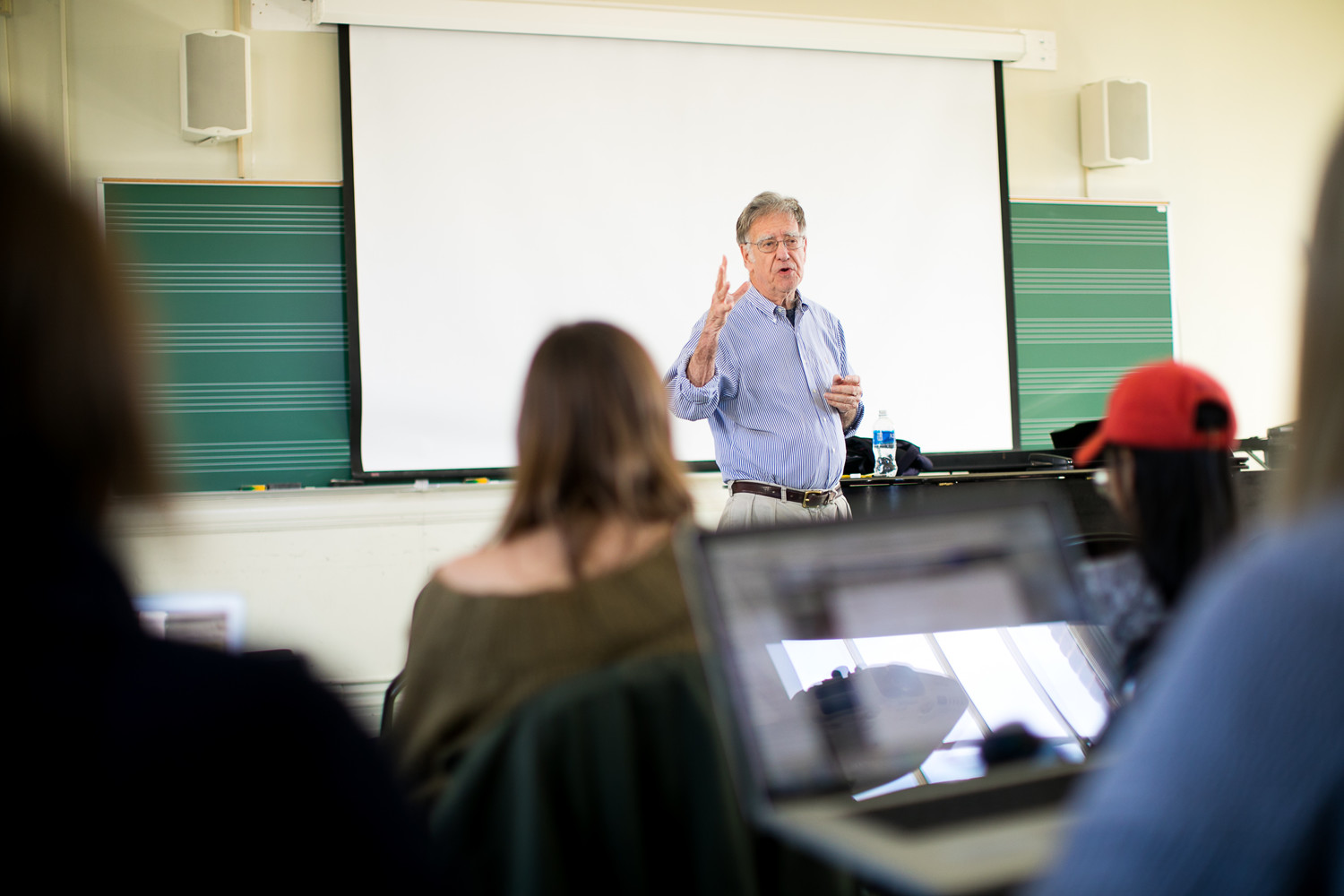As the global economy changes, the United States will need to increase the number of its citizens who earn college degrees in order to stay competitive. The U.S. already lags behind at least 10 countries in the percentage of the population aged 25 to 34 that hold postsecondary degrees or certificates.
With the support of the Lumina Foundation, the University of Virginia’s Miller Center created the National Commission on Financing 21st Century Higher Education in 2014. Their ultimate goal was to recommend funding changes for the U.S. public higher education system that would lead to 60 percent of the American labor force having postsecondary degrees or certificates by 2025. Only about 40 percent of the labor force holds them now.
“That’s the percentage that would keep us competitive in the world marketplace,” said Raymond Scheppach, the commission’s project director.

Scheppach, the Miller Center’s senior fellow for economic policy and a professor of public policy at UVA’s Frank Batten School of Leadership and Public Policy, assembled and oversaw the 14-person commission of former governors and current CEOs, state legislators who chair appropriation committees and university presidents.
On Wednesday, the commission released its final report with recommendations for bolstering higher education funding and thus degree attainment over the next decade. Prior to the official release, Scheppach and the staff of the commission met with congressional staffers for both the House and the Senate to share their findings. They recommend nine major actions:
- Increase federal and state institutional support: As states have struggled to return their budgets to pre-recession levels, the commission recommends that the federal government provide an annual block grant of $15 billion to be distributed among states for higher education funding. Under this plan, states would be required to also grow their funding commitment.
- Enhance state revenue to support higher education: Most current state revenue systems were built on an outdated manufacturing economy model. States should update their taxes to reflect a 21st-century economy, which would increase their revenue stream.
- Stimulate the development and implementation of low-cost delivery models: This could include more credit-accumulation options, such as credits based on the demonstration of skills rather than hours met.
- Encourage productivity in the postsecondary system: States can provide funding incentives for public institutions to increase the number of degrees conferred per dollar of spending. They advise a goal of a 1.5 percent annual increase in productivity over the next decade.
- Create incentives for students to graduate on time: The federal government could expand the maximum number of credit hours allowed per semester for Pell Grant recipients and schools could reform financial aid policies to cover summer coursework. Other recommendations include rewarding degree completion milestones.
- Help students and their families make better decisions: This entails offering students guidance on financial options and degree benefits as early as ninth grade and increasing accessibility to well-trained school counselors.
- Increase and reform financial aid to target low-income students: To reach the 60 percent goal, the U.S. will need to enable more low-income students than ever to attend and complete college. Among other things, the commission recommends expanding the Pell Grant program and streamlining the 14 federal loan programs.
- Develop additional private funding: Experimentation with social impact bonds and new approaches to college savings plans could both contribute to this goal. Allowing institutions to be more entrepreneurial in raising funds and opening the door for new private lending models are additional options put forth by the commission.
- Take advantage of private-sector programs: Currently, the private sector spends about $86 billion on tuition reimbursements and corporate training, yet few certificates or degrees are created. Here, states could provide tax incentives or grants to businesses to increase the number of degrees.
“There are some recommendations that will require major overhauls, but we also suggest some simpler tactics for things like getting students to graduate on time or early,” Scheppach said. “For example, if a student borrows $4,000 in loans, maybe they only have to pay back $3,600 if they finish in four years.”
As the report circulates, the commission is also advocating generally for greater collaboration between the state and federal governments, the private sector and postsecondary institutions. If a combination of some or all of their recommended tactics are used to reach the 60 percent goal, it will mean an additional 16.4 million degree- or certificate-holders over the current baseline will join the workforce between 2017 and 2025.
At the university level, UVA is already employing some of the recommended tactics, particularly in regard to access and affordability. UVA is one of only two U.S. public universities that offer aid packages that meet 100 percent of demonstrated financial need for all undergraduates while offering admission without consideration for students’ family finances. Additionally, the Board of Visitors just announced the creation of a permanent endowment to support student scholarships.
Scheppach also is preparing the next generation of leaders to take on important policy changes like this.
“I teach a class at the Batten School called ‘Leadership in the Public Arena,’ and one of the things we work on is how to successfully run a research commission like this, as well as how to work with the public and private sectors to implement new policies,” he said.
Media Contact
Article Information
December 15, 2016
/content/uva-led-commission-offers-9-ways-fund-us-higher-ed-future

